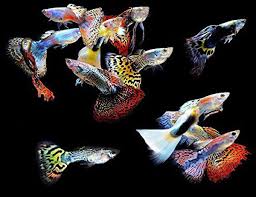
In Vietnamese tradition, birthdays for elderly individuals hold a unique and revered place. Unlike Western birthday parties that often center around cake, balloons, and presents, a birthday celebration for a senior person in Vietnam carries profound cultural symbolism. It’s not merely a personal milestone—it’s a community event, a time for expressing gratitude, honoring wisdom, and celebrating a life filled with resilience and virtue.
At the heart of many such celebrations is a symbolic dish: longevity eggs, or trứng trường thọ. These eggs, often hard-boiled and dyed red, represent long life, good health, and enduring fortune. The presence of longevity eggs at an elderly person’s birthday is more than a culinary choice—it is a ritual filled with respect and hopes for many more years of life.
This article explores the cultural meaning, traditional practices, culinary preparations, and modern adaptations of longevity eggs in the context of elderly birthday celebrations in Vietnam. It also reflects on how these ceremonies bring families and communities together to cherish the wisdom and presence of their elders.
The Significance of Elderly Birthdays in Vietnamese Culture
In Vietnam, elders are held in high esteem. Their birthdays are seen as communal achievements rather than individual milestones. Reaching the age of 60, 70, 80, or beyond is not only a personal triumph but also a blessing for the family.
“Thượng thọ”, a term meaning “celebrating great longevity,” is often used to describe birthdays for people aged 70 and above. These are not casual affairs but highly respected ceremonies that often involve relatives from near and far, formal speeches, offerings to ancestors, and community feasts.
Unlike the modern, youth-focused image of birthdays, an elderly birthday in Vietnam is a manifestation of family values, tradition, and filial piety. It is an opportunity for younger generations to show appreciation for their parents or grandparents and to reaffirm the cultural value of aging with dignity.
Trứng Trường Thọ – The Longevity Egg
Trứng trường thọ—literally “longevity eggs”—are hard-boiled chicken or quail eggs dyed red and often served as part of a symbolic meal during elderly birthdays. The red color is essential in Vietnamese and Chinese cultures, representing joy, prosperity, and good fortune. These eggs are usually presented in bowls or small platters and may be given individually to guests or placed in decorative trays for the honored elder.
Symbolism of the Egg
-
Circle of Life: The egg represents completeness, unity, and the natural cycle of life. For an elderly individual, it symbolizes the culmination of life experience and the continuity of family lineage.
-
Red as a Protective Color: In Asian symbolism, red is a color of protection and vitality. Red eggs are believed to drive away evil spirits and bring happiness to both the recipient and the guests.
-
Longevity and Rebirth: Eating the egg is thought to renew energy and bestow additional years of life. It also implies a peaceful and healthy aging process.
The Birthday Ceremony: A Scene of Family and Harmony
Elderly birthday parties in Vietnam are warm, respectful, and community-oriented. They often include the following elements:
1. Altar and Ancestor Offerings
Before any public celebration, families typically offer incense, flowers, fruits, and red eggs at the ancestral altar. This gesture seeks blessings from ancestors and aligns the celebration with spiritual harmony.
2. Receiving Guests
Friends, neighbors, and relatives gather to express congratulations. The elderly person may receive traditional greetings such as “Chúc ông/bà sống lâu trăm tuổi” (Wishing you to live a hundred years).
3. Offering Longevity Eggs
Trays of red-dyed eggs are presented to the elder as symbols of long life. These are often accompanied by other symbolic foods like noodles (also representing long life), glutinous rice cakes, or sweet desserts made from mung beans and coconut.
4. The Banquet
A birthday feast follows, featuring traditional dishes chosen not only for flavor but for symbolism. Guests are often invited to eat longevity eggs as part of the meal, reinforcing the shared wish for good health and extended life for the elder.
How Longevity Eggs Are Prepared
Preparing longevity eggs is a careful and intentional process, reflecting the respect associated with their symbolism.
Step 1: Choosing the Eggs
Chicken eggs are most common, but quail eggs are also used for their smaller, elegant size. The eggs should be fresh and free of cracks to maintain symbolic completeness.
Step 2: Boiling the Eggs
Eggs are hard-boiled in water with a touch of salt or vinegar to help the shells peel easily later. Boiling must be done thoroughly to prevent any runniness, as firmness signifies stability and endurance.
Step 3: Dyeing the Eggs Red
The most traditional way to dye eggs is to soak them in a natural red food dye made from beetroot or red rice. Nowadays, food-safe artificial red coloring is also used. The eggshells absorb the color and turn a bright, festive red. Some families may peel the eggs and dye the whites directly, but keeping the shell is more symbolic.
Step 4: Serving the Eggs
After dyeing, the eggs are dried and placed in decorated trays, sometimes accompanied by leaves or flowers. They may be placed on the altar, served in the meal, or distributed to guests to take home.
Accompanying Symbolic Foods
While longevity eggs are central to the meal, they are often paired with other traditional dishes that align with the theme of longevity and prosperity.
-
Longevity Noodles (Mì Trường Thọ): Long uncut noodles served in broth represent the wish for a long, smooth life.
-
Sticky Rice (Xôi Gấc): Red glutinous rice symbolizes luck and happiness.
-
Boiled Chicken: A traditional food for ceremonial occasions, often served with lime leaves and salt.
-
Sweet Soups (Chè): Usually made with lotus seeds or mung beans, representing purity and peace of mind.
Together, these dishes create a meal that is both nutritious and rich in symbolic meaning.
Modern Adaptations and Changing Traditions
While traditional customs remain strong in many rural and conservative households, urbanization and globalization have introduced new trends into how elderly birthdays are celebrated.
Blending East and West
In cities, some families choose to combine traditional Vietnamese elements with Western-style birthday customs such as birthday cakes, candles, and photo booths. However, symbolic foods like red eggs remain a vital part of the ceremony.
Simplified Ceremonies
Busy lifestyles and smaller living spaces have led some families to host more intimate gatherings at restaurants or community halls. These may feature shortened rituals but still include longevity eggs as a core part of the meal.
Commercial Egg Products
Pre-dyed and pre-cooked red eggs are now available in local markets, especially around special occasions. While convenient, some families still prefer to prepare them at home as a sign of sincerity and love.
Eco-Friendly Practices
Some younger hosts opt for natural dyes and biodegradable decorations, reflecting a growing awareness of environmental sustainability while maintaining cultural values.
The Role of Longevity Eggs in Diaspora Communities
Vietnamese families living abroad often carry on the tradition of longevity eggs, particularly in countries like the U.S., Canada, and Australia. Although sourcing red sticky rice or traditional dyes may be more challenging, creative substitutes allow these families to preserve the essence of the custom.
For second- and third-generation Vietnamese abroad, celebrating grandparents’ birthdays with longevity eggs is a way to stay connected to their roots and pass on cultural identity to younger members of the family.
Emotional and Psychological Impact
Beyond their culinary and symbolic roles, longevity eggs serve as emotional bridges between generations. Preparing and sharing these eggs fosters a sense of love, care, and continuity.
For the elderly person being honored, receiving red eggs is more than receiving food—it’s a gesture of remembrance, reverence, and belonging. It reassures them that their life journey is appreciated and their presence cherished.
For children and grandchildren, the act of giving longevity eggs is an educational moment. It teaches values of respect, the importance of tradition, and the power of family unity.
Conclusion
The tradition of celebrating elderly birthdays with longevity eggs is a timeless aspect of Vietnamese culture. Rooted in symbolism and infused with emotion, this practice turns a simple food item into a vessel of wishes, respect, and familial love.
As Vietnam continues to evolve in the modern era, the red egg remains a vibrant reminder of the cultural threads that bind generations together. Whether prepared at home with care or purchased in modern supermarkets, longevity eggs continue to bless birthdays with their ancient message: May you live long, may you live well, may you be surrounded by love.









